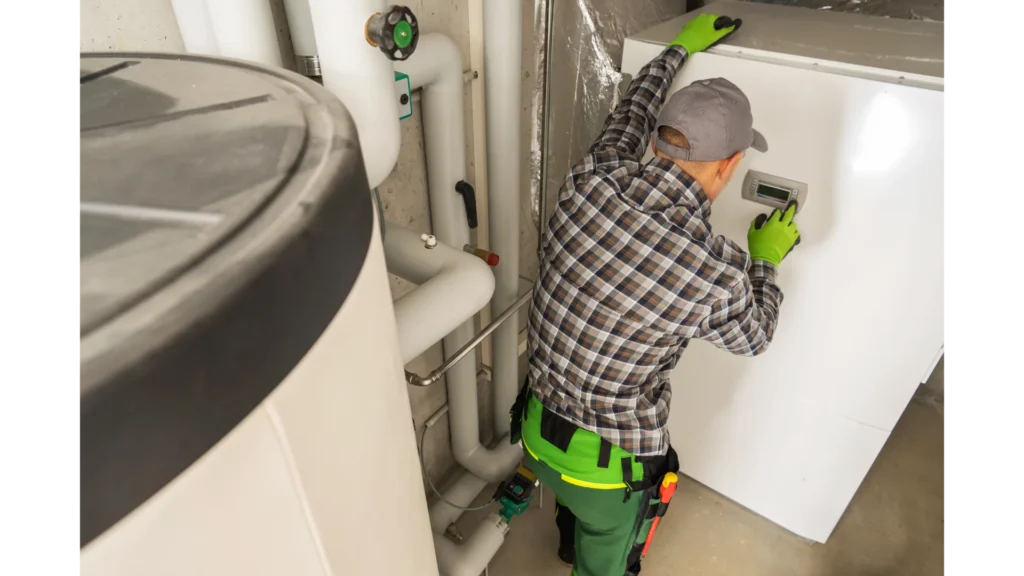
Residential battery storage for solar panels has become increasingly popular in recent years. With the rising cost of energy and its environmental benefits, homeowners have been drawn to this renewable source of power generation.
Residential battery storage is becoming a more attractive choice for those seeking to reduce their reliance on traditional sources of electricity.
The use of solar panel systems coupled with residential battery storage allows consumers to take control of their energy consumption. By storing excess energy generated by the panels during peak production times, households can utilize stored electricity when needed instead of relying solely on grid-supplied power.
The combination also provides greater independence from utility companies due to reduced dependence on them for energy provision. This article will explore the advantages of having access to such a system as well as potential drawbacks that should be considered before making any decisions about installing one in your home.
Solar energy is a renewable source of electricity that can be used to power homes and businesses. Solar panels are an efficient way to capture this energy and convert it into usable electrical current.
However, solar energy alone cannot provide the same reliability level as traditional electricity sources. To ensure a steady supply of power, battery storage must be utilized in conjunction with solar panels.
Battery storage for solar systems allows users to store unused energy from their solar panels during peak production periods, often when there is no demand for the extra energy, such as during daylight hours or on sunny weekends. This stored energy can then be used during low-production times when there may not be enough sunlight available to generate sufficient electrical power.
Battery storage also helps protect against fluctuations in grid voltage and frequency caused by sudden increases in demand or outages on the electricity network. Hybrid Inverters allow users to easily integrate batteries into existing PV systems while providing maximum efficiency, safety and control over your system’s performance.
By combining battery storage with solar panel technology, homeowners and business owners will experience enhanced security, peace of mind, and better access to reliable, clean energy.
The necessity of batteries for solar panels is clear – without them, the excess energy generated from solar power would be lost. Investing in battery storage systems offers a range of advantages that make it worth considering.
Firstly, adding a battery storage system to existing solar panels can drastically reduce electricity bills as excess energy produced during sunny days can be stored and used at night, on cloudy or rainy days when production is low. This reduces reliance on grid-supplied electricity, leading to significant cost savings over time.
Battery storage provides greater control over how you use your solar power and allows owners to store their energy.
Furthermore, with more households having access to renewable technologies like wind turbines and solar panels, battery storage systems become essential if homeowners wish to maximize their potential returns by using the cleanest energy sources available.
The development of residential battery storage for solar panels can provide a reliable backup power and energy storage source.
The battery system consists of two essential elements: the charge controller and the batteries.
The charge controller regulates the amount of electricity sent to or taken from the batteries, ensuring they are not overcharged or discharged too quickly. This helps maintain their lifespan and performance to maximize efficiency.
Batteries used in a solar panel system must be designed specifically for this purpose. Regular car batteries cannot handle frequent cycling, which happens when they are charged and discharged regularly.
Batteries also need appropriate protection against extreme temperature changes, water exposure, dust particles, and other environmental factors.
Additionally, an inverter is required to convert the stored DC power into AC power for use within homes and businesses.
Therefore, careful consideration should be given when selecting components for your battery storage system to ensure its optimal operation at all times.
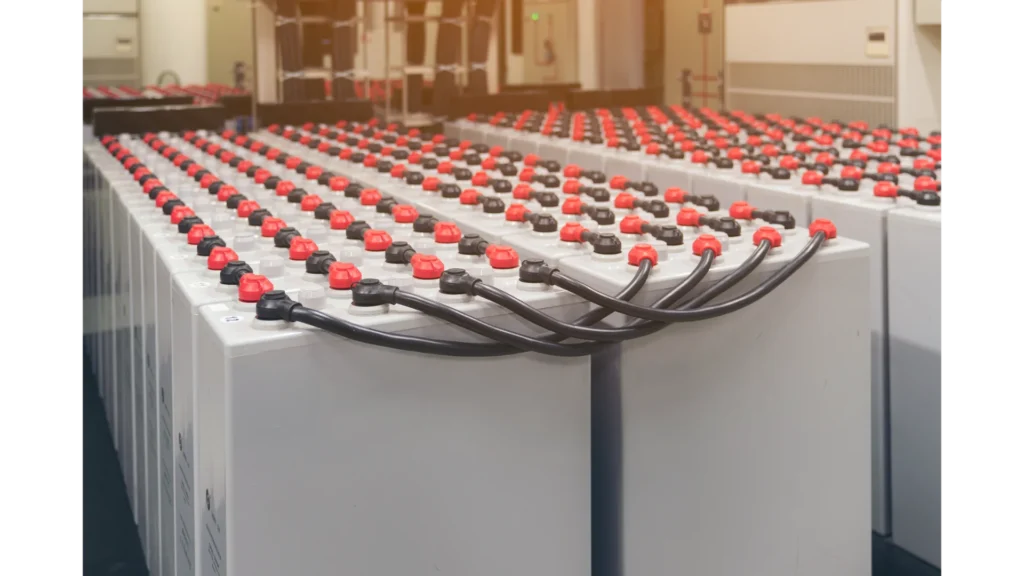
The concept of freedom is deeply intertwined with the idea of energy independence. Battery storage for solar panels allows you to take control of your energy, enabling you to become self-sufficient and free from relying on external sources.
To determine if battery storage is suitable for your needs, several important factors should be considered:
Considering all these factors will allow you to make an informed decision about whether residential battery storage is suitable for your lifestyle.
Having access to reliable and efficient power provides peace of mind knowing that no matter what happens outside, you have the ability to stay connected and keep living life as usual.
Once you have determined that residential battery storage is necessary for your solar panel system, the next step is to choose the ideal system. There are many different factors to consider when making this decision, and it can be daunting to understand how each factor affects the battery’s overall performance. This section will look at key components of a residential battery storage system to help you decide which type of storage meets your needs.
The primary components of a residential battery storage system depend on three main aspects: capacity, power output, and efficiency. Table 1 below provides an overview of these characteristics.
Component | Capacity | Power Output | Efficiency |
Lead-acid Battery | Low | Low | Low |
Lithium Ion Battery | High | High | High |
Lead-acid batteries are typically cheaper than lithium-ion models but offer lower capacities and power outputs. Conversely, lithium-ion batteries cost more initially but provide high capacities and higher power outputs with greater efficiencies over time due to their superior ability to charge quickly and discharge slowly without losing energy or degrading the cells within them.
With so much information available about residential battery systems, it’s important to research to select the best option for your unique situation. Evaluating all available factors objectively can help ensure you get a reliable system that suits your specific needs and budget while providing long-term satisfaction.
The benefits of installing solar panels in homes are well known, but there is a dilemma that homeowners must face; how to store the energy generated during peak hours. AC and DC coupling offers two viable options for residential battery storage, each with distinct advantages and disadvantages.
To make an informed decision on which system best meets individual needs, it is necessary to understand:
By understanding these distinctions, homeowners can decide whether they should opt for AC or DC coupling for their solar panel installation.
It is crucial to consider factors such as cost-effectiveness, efficiency, design flexibility, scalability, safety requirements, string sizing capacity, etc., while making this choice – all of which will contribute to ensuring the desired result.
With advancements in technology continuing to be made every day, solar power has become more accessible than ever before. Choosing the right option provides an opportunity for individuals to take control of their energy usage.
AC and DC coupling are both viable options when considering solar energy systems. However, assessing your system’s battery compatibility is important before deciding. Understanding the differences between these two coupling methods can help you determine which one best fits your needs.
To decide which type of coupling would be most suitable for your home’s solar panel system, several factors should be considered. To help illustrate this comparison more clearly, we have created the following table:
| AC Coupling | DC Coupling |
Cost | Moderate | Higher |
Efficiency | Lower | High |
Complexity | Low | Moderate |
AC-coupled systems tend to cost less but may be less efficient than their DC counterparts. The installation process for an AC-coupled system also tends to be simpler than that of a DC-coupled system since fewer components must be connected to function correctly. On the other hand, though they require a more complex setup than their AC-coupled equivalents, DC-coupled systems generally provide higher efficiency levels than similar configurations due to their use of direct current instead of alternating current.
Given this information, it is possible to make an informed choice about whether or not either option will meet your residential battery storage needs for solar panels. Before committing to any particular approach, however, you should carefully weigh all potential costs involved and verify that all necessary components are compatible with each other first to ensure optimal performance from your chosen solution.
Residential battery storage for solar panels is a great way to gain freedom from traditional energy sources. Homeowners can take advantage of this efficient and renewable energy source, making it an attractive option for those looking to make their lives more sustainable.
Here are three leading home battery solutions:
These home batteries provide people with a reliable source of electricity that is not only eco-friendly but also cost-effective over time as well as offering peace of mind during times when there may be unexpected brownouts or blackouts due to extreme weather conditions or other reasons beyond our control; these units help ensure that families remain safe and comfortable no matter what is happening outside their homes.
Compact installations of residential battery storage for solar panels offer a range of advantages to households. The main advantage is that they are space efficient and can be quickly installed, making them ideal for smaller homes or apartments that may not have enough room for larger, more complex systems.
| Advantages | Disadvantages |
1 | Quick installation | Higher initial costs |
2 | Space efficiency | More frequent servicing |
3 | Low maintenance costs | Reduced capacity |
4 | High energy output | Limited warranties |
5 | Longer lifespan | Decreased reliability |
Optimal compact installations require careful consideration when selecting components, as the limited space available means compromises need to be made between size, performance, and cost. Furthermore, while they offer higher energy outputs than their larger counterparts, this comes at the expense of reduced capacity and decreased reliability due to increased wear-and-tear on individual parts due to higher usage levels. As such, it is essential to ensure that all components used provide adequate warranties and service plans to provide peace of mind regarding future repairs and replacements. Despite these considerations, however, compact residential battery storage solutions remain an attractive option for many homeowners looking for an effective way to reduce their electricity bills without taking up too much space in their homes.
The integration of residential battery storage with smart home technology has the potential to revolutionize the way that households manage their energy needs. With this connection, homeowners can more effectively monitor and control their electricity production and consumption to maximize savings on bills while still enjoying all the benefits of solar panel usage.
This section will explore how these systems interact and what benefits they bring:
By taking advantage of existing smart home technologies and integrating them with residential battery storage, homeowners gain greater control over their energy usage while reducing overhead costs associated with running their homes. Furthermore, this setup is relatively simple and straightforward – meaning even those not technically savvy can easily take advantage of its capabilities.
The configuration largely determines the efficiency of residential battery storage for solar panels. Off-grid systems provide an opportunity to maximize the potential benefit, but they require careful consideration and planning before installation.
It is important to understand all available options to find a setup that meets individual needs and goals. One way to create an off-grid system is to include multiple batteries in parallel or series configurations with different capacities. Parallel connections provide redundancy so that the other can take over operations if one fails.
Series connections allow larger-capacity batteries to be used while maintaining adequate voltage levels across each battery bank. The number of cells chosen should also consider factors such as charge time, discharge rate, overall energy output, cost, and maintenance requirements.
Ultimately, selecting the proper off-grid configuration involves balancing these considerations against desired outcomes and resources available. By researching various possibilities and understanding how components interact within the system, it is possible to develop a customized system capable of meeting power demands and saving money in the long run.
With this knowledge, homeowners have greater control over their energy sources than ever before.
The cost of a home battery system depends on the size and type of installation and the quality of the components used. A smaller residential-scale system can range from approximately $2,000 to more than $10,000 for larger systems with multiple batteries.
Lithium-ion battery options typically have higher lifetime costs due to their longer lifespan than other types, such as lead acid and nickel-cadmium. Installation costs will also vary depending on local regulations and energy provider requirements.
Homeowners should consider additional expenses, such as ongoing maintenance and replacements when deciding which storage option best suits their needs. Battery warranties usually last up to 10 years or more, but checking if any labor charges apply after the initial purchase period ends important.
In addition, electricity rates may fluctuate over time, so homeowners should ensure they have adequate budgeting strategies for future changes that could affect the efficiency of their solar panel storage setup.
With more homeowners embracing renewable energy sources, it’s important to understand how much this additional investment may cost. A simple guide to solar battery costs can provide the information needed to make an informed decision about whether or not this option makes sense for your home.
The first step in determining the potential cost of residential battery storage is to identify which system works best with existing architecture and lifestyle needs. For example, some batteries are better suited for larger homes, while others may be ideal for smaller spaces or off-grid living.
Additionally, three types of solar batteries are available: lead acid, lithium-ion, and flow cells. Each type has its advantages and disadvantages regarding price, efficiency, size, and lifespan, and it’s wise to research each one before making a purchase decision.
Once you know which model works best for your situation, you must consider installation fees and other associated expenses, such as wiring upgrades or inverter replacements. Depending on the complexity of the project, these costs can vary widely from job to job, so it is recommended that you get several quotes before proceeding with the installation process.
Considering all these factors should give you a basic understanding of what kind of financial commitment is involved in adding battery storage capacity at home.
When it comes to solar battery storage, cost is an important factor. However, many homeowners may not be aware that financial support programs are available to help reduce the overall installation and maintenance costs. It is worth researching these options to better understand how they could benefit you as a homeowner.
Federal tax incentives can often provide up to 30% off the total cost of residential batteries for solar panels.
Additionally, some states offer incentives or rebates that make investing in solar energy more attractive.
Furthermore, utility companies sometimes offer net metering plans, which allow customers with renewable energy systems to sell excess electricity back to the grid at retail rates when production exceeds consumption.
All these factors should be considered before deciding to purchase battery storage for your home’s solar system.
The advancement of residential battery storage for solar energy has provided communities with more efficient and flexible access to clean power than ever before. With the emergence of electric vehicles (EVs) on roads, these batteries are now being deployed into homes to store excess electricity generated from renewable sources such as solar panels.
The EV batteries offer several distinct advantages compared to traditional lead acid or lithium-ion batteries:
By utilizing EV batteries for solar energy storage, homeowners can enjoy reliable access to renewable power while reaping the benefits of cost savings, sustainability, and safety. In addition, this technology offers increased flexibility when it comes to designing home energy systems that meet individual needs – something that is becoming increasingly important in today’s world.
Using electric vehicle (EV) batteries for residential solar energy storage has become an increasingly popular option in recent years, allowing homeowners to store excess solar energy produced during the day and use it at night. This has made EVs more attractive as they have a wide variety of benefits, including reduced emissions and lower operating costs. However, one can go further by using solar-generated power to charge EV batteries directly, eliminating the need for traditional electricity sources.
This is achieved through the installation of photovoltaic (PV) panels that generate DC power which is then converted into AC via an inverter before being fed into the EV battery charger. The table below outlines some key advantages associated with this approach:
Advantages | Disadvantages | Benefits |
Reduced electrical bills | Initial setup cost | Lower dependency on grid supply |
Increased energy self-sufficiency | Limited availability of sunlight | Improved air quality |
Enhanced sustainability | Potential safety risks | Financial incentives available |
Powering them with solar energy offers several clear advantages compared to conventional EV charging methods. These include reducing reliance on grid-supplied electricity, increasing self-sufficiency, enhancing environmental sustainability, improving air quality, and providing access to financial incentives from governments and utilities when applicable. Furthermore, while potential safety risks are involved in connecting PV panels to home wiring systems and initial setup costs incurred upfront, these should not be seen as deterrents since, once installed correctly, such systems can provide reliable service over many years without significant significant maintenance or repair needs.
By harnessing renewable energy sources like sunshine, we can create real freedom in reaching our goals – whether traveling further distances or simply saving money. It’s time to embrace clean energy solutions that give us greater control over how we consume resources and achieve a cleaner future for all.
Residential battery storage systems for solar energy have become increasingly popular in recent years. Battery storage systems can provide significant cost savings, benefit homeowners, and help offset peak electricity usage costs.
Understanding the types of batteries available, their estimated life cycle, and associated tax incentives are important considerations when deciding whether or not to install a residential battery system.
Additionally, electric vehicles powered by solar energy are possible with the right combination of components. With this knowledge in mind, individuals should be better informed on how best to decide to invest in a residential battery storage system for their solar panels.
When considering purchasing a residential battery storage system, the cost is one of the most important factors to consider.
While many variables can affect the price of such a system, typically they range from around $2,000 for basic systems up to as much as $20,000 or more for larger and more complex ones.
Furthermore, installation costs will also vary depending on complexity and local regulations.
It is therefore important to thoroughly research different options available before making any commitment to ensure it meets both budget and energy needs.
Battery life is an important factor to consider when investing in solar energy.
Solar batteries typically last between 5 and 15 years, depending on the type of battery used, its usage frequency, size, environmental conditions such as temperature and humidity, and how well it’s maintained.
Lithium-ion batteries are increasingly popular due to their long lifespans (up to 20 years) and relatively low maintenance costs.
Additionally, manufacturers offer warranties that guarantee a certain lifespan for each particular model.
When it comes to solar energy storage, several types of batteries can be used.
Lead-acid batteries have been the primary form of solar battery for many years due to their low cost and long service life; however, lithium-ion batteries are becoming increasingly popular as they offer greater power density and longer cycle life than lead-acid batteries.
In addition, newer technologies such as sodium nickel chloride (NMC) or vanadium redox flow (VRF) provide better efficiency over traditional models but with a higher price tag.
Ultimately, the type of battery chosen will depend on budget constraints, desired performance levels, and other environmental considerations.
Tax incentives for battery storage systems vary depending on the jurisdiction.
In some places, such as Australia and Germany, government-funded programs reduce the cost of installing a solar panel or battery storage system by up to 50%.
In other countries, including the United States, tax credits may be available for energy efficiency improvements like adding a solar panel or battery storage system.
Additionally, many utility companies offer rebates for residential customers installing these systems.
Researching local incentives before investing in any renewable energy project is important.
It is possible to power an electric vehicle with solar energy.
Solar battery storage systems can charge the batteries in an electric car, allowing for more efficient and cost-effective transportation.
This system collects energy from solar panels during sunny hours and stores it as electricity for later use.
The stored energy can then be used at night or on days without sunshine to fuel the vehicle.
Additionally, certain tax incentives may exist depending on the locality that could help offset some of the costs associated with such a setup.

How To Know If My Solar Compatible With Electrical Setup? Installing a solar panel system is an excellent way to reduce reliance on traditional electricity
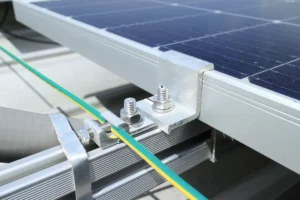
How Do I Ensure That My Solar Panel System Is Properly Grounded? Properly grounding a solar panel system is crucial to ensure safety, optimize performance,
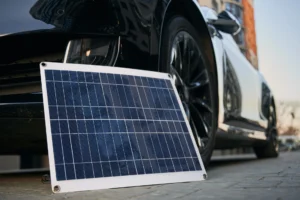
Can I Use My Ev’s Battery To Store Excess Solar Energy? The utilization of renewable energy sources such as solar power is on the rise,
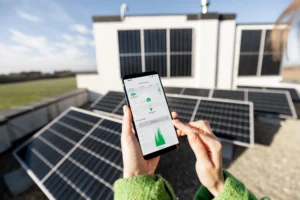
Can I Monitor The Performance Of My Solar Panel System Remotely? Solar energy is becoming an increasingly popular alternative to traditional sources of electricity. With

What Is The Difference Between Solar And Photovoltaic? Solar energy is a topic that has been gaining more attention in recent years as people become
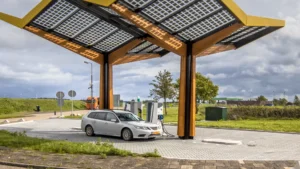
Can I Use Solar Panels To Power My Electric Vehicle? Can I use Solar Panels To Power My Electric Vehicle? The rise of electric vehicles